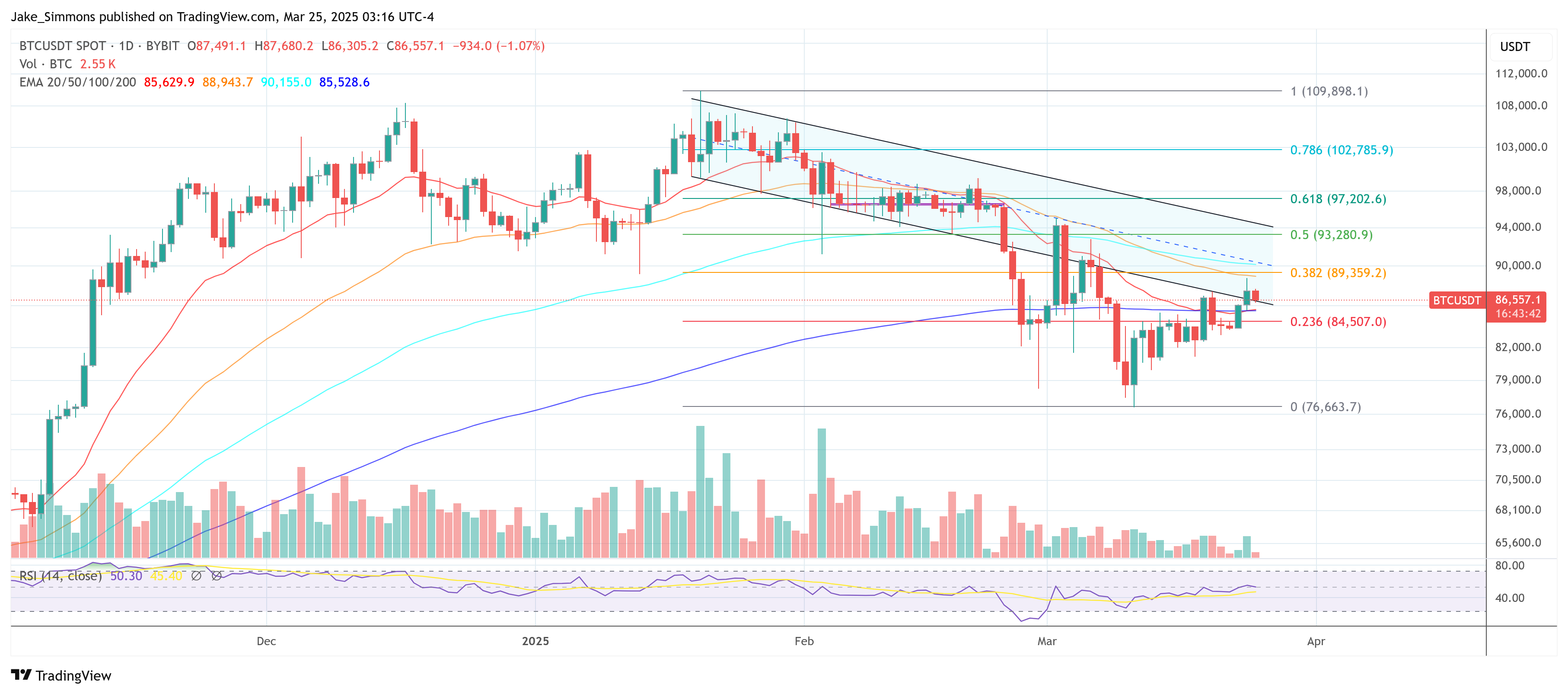Cause to belief

Strict editorial coverage that focuses on accuracy, relevance, and impartiality
Created by trade consultants and meticulously reviewed
The very best requirements in reporting and publishing
Strict editorial coverage that focuses on accuracy, relevance, and impartiality
Morbi pretium leo et nisl aliquam mollis. Quisque arcu lorem, ultricies quis pellentesque nec, ullamcorper eu odio.
Recession dangers and macro uncertainty are at present as soon as once more on the middle of market discourse, with Bitcoin being down -20% from its peak. But macro analyst Tomas (@TomasOnMarkets) contends that the broader financial backdrop is just not as dire as some headlines counsel, regardless that sure datasets have pointed to weaker development in early 2025.
“Doesn’t look very recessionary to me?” Tomas wrote in a latest post on X, echoing the skepticism he has maintained for months. He pointed to particular indicators that started sliding in February however have began to stabilize. In line with his evaluation, US development nowcasts—which combination numerous real-time measures of financial development—“fell all through February however have been leveling off for 3 weeks.” He likewise referenced the Citi Financial Shock Index (CESI), which tracks how precise financial knowledge compares to consensus forecasts. Since January, the CESI had been in a downturn, implying that knowledge releases had been coming in beneath expectations, nevertheless it has additionally steadied in latest weeks.
Associated Studying
“Falling CESI = knowledge coming in beneath expectations, rising CESI = knowledge coming in above expectations,” Tomas defined, highlighting the importance of the index for market sentiment. The upshot is that, whereas markets grew more and more defensive through the early-year weak spot, these indicators are not deteriorating on the tempo noticed at first of 2025.
Why Bitcoin Mirrors Summer time 2024
Tomas then turned his consideration to parallels between the present setting and two notable previous episodes: the turbulence of Summer time 2024 and the rout of late 2018. He underscored that, in every case, international markets encountered a pointy drawdown triggered by what he labeled “development/recession scares,” mixed with different exogenous pressures.
“For me, the 2 latest situations which can be probably the most just like in the present day by way of each value motion and macro backdrop are Summer time 2024 and late 2018,” he wrote. Throughout Summer time 2024, considerations over development plus a widespread yen carry commerce unwind contributed to a ten% equity-market drawdown. In late 2018, an escalating commerce battle through the first Trump-era tariff moves equally prompted an preliminary correction in equities of about 10%, finally deepening into an additional 15% pullback.
Now, with fairness markets having additionally suffered roughly a ten% peak-to-trough decline not too long ago, Tomas sees distinct echoes of these historic moments. He famous that such parallels prolong to Bitcoin, which fell round 30% in Summer time 2024 and 54% in late 2018—near the 30% slide it has endured this time round. The query, he posed, is which path lies forward: will the market comply with the comparatively contained Summer time 2024 correction, or will it spiral right into a extra painful chain of losses just like late 2018’s prolonged selloff?
Associated Studying
“So which means?” Tomas requested, underscoring the unsure juncture dealing with each crypto property and equities. His stance leans towards anticipating a situation extra akin to Summer time 2024 than to the tumult of 2018. In his phrases, “I’m nonetheless within the camp that tariffs gained’t be as dangerous as many anticipate — I’ve been right here for months,” a viewpoint he believes additionally helps clarify the considerably shocking resilience in danger property currently. He urged that “a few of the noises over the previous couple of days are doubtlessly pointing in the direction of this consequence, which might be why danger property have jumped in the present day,” though he stopped in need of claiming any definitive decision.
A number of components, in Tomas’s view, bolster the case that in the present day’s panorama aligns extra carefully with Summer time 2024 than with late 2018. One is the latest easing of monetary situations, which had tightened earlier within the 12 months however have since moderated. One other is the US dollar’s notable weakening in latest weeks, a stark distinction to its ascent throughout 2018 that intensified promoting strain on international property.
Tomas added that the majority main indicators nonetheless assist a continued enterprise cycle enlargement, a stance he believes is much less reflective of the contractionary indicators that rattled traders almost seven years in the past. One other contributing component, he famous, is the widely favorable seasonal sample for US fairness indices, which regularly rebound after a weak February and discover firmer footing by mid-March. Lastly, tight credit score spreads—nonetheless beneath their highs seen in August 2024—level to secure credit score markets that don’t seem like pricing in extreme financial misery.
Past the query of macro indicators, Tomas overtly admitted fatigue with the swirl of discussions round financial coverage catalysts. “I’m truthfully actually uninterested in all of the tariff speak,” he wrote, whereas reminding followers that April 2 stays pivotal for readability. “April 2nd ‘tariff liberation day’ will in all probability play an enormous position in deciding,” he concluded.
At press time, Bitcoin traded at $86,557.

Featured picture created with DALL.E, chart from TradingView.com





